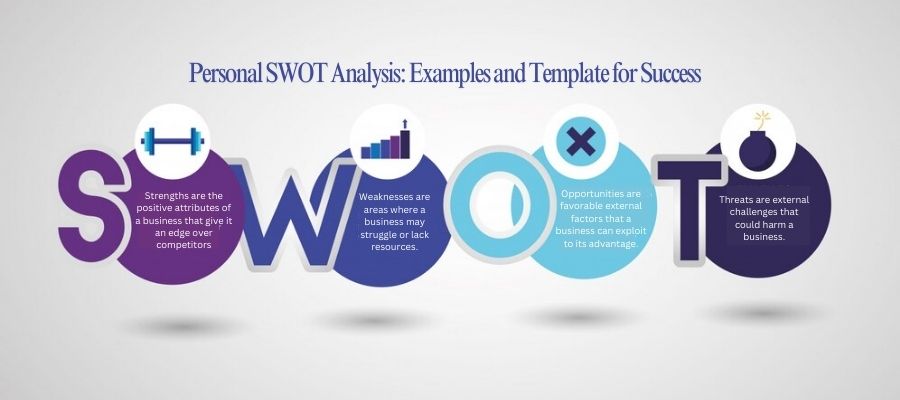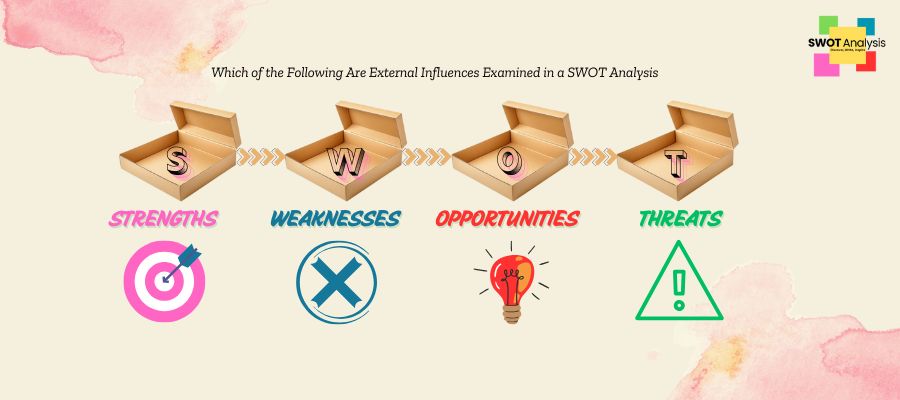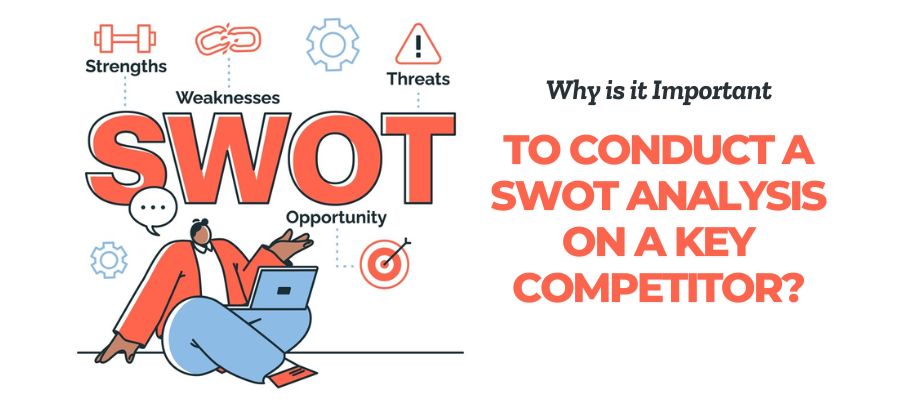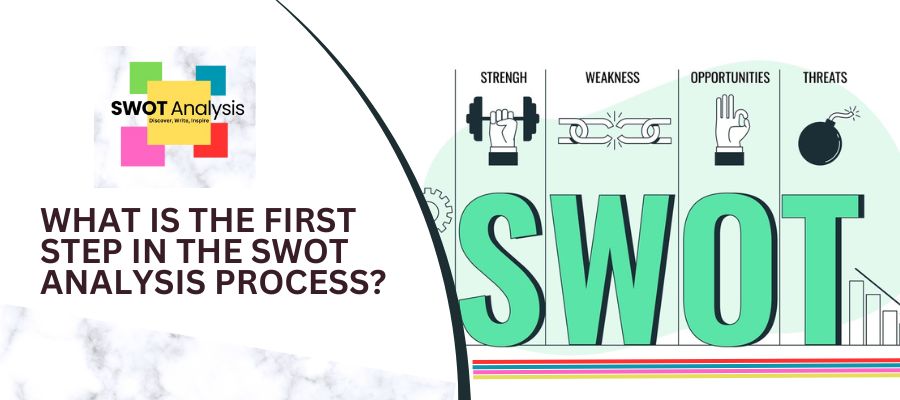A Personal SWOT Analysis is a self-assessment tool that helps you evaluate your personal strengths, weaknesses, opportunities, and threats. This strategic tool is not just for businesses but can profoundly impact your personal and professional growth. Whether you’re looking to advance your career or achieve your personal goals, understanding the components of a SWOT analysis can help you figure out the next steps.
This article will guide you through everything you need to know about personal SWOT analysis, including examples, templates, benefits, and tips to maximize its potential.
What is Personal SWOT Analysis?
Personal SWOT Analysis is a self-reflection framework that allows you to:
- Identify your personal strengths and weaknesses.
- Analyse external factors that could impact your opportunities and threats.
- Develop a strategic action plan to achieve your goals.
In essence, it’s about understanding your strengths and opportunities while mitigating weaknesses and potential threats.
Explanation of Personal SWOT
- Strengths: What sets you apart from others? Listing your strengths, such as skills, achievements, and personality traits, is key.
- Weaknesses: These are areas where you can improve. Weaknesses may include skill gaps, lack of resources, or habits.
- Opportunities: These are external factors or new opportunities that could enhance your personal or professional growth.
- Threats: Threats could include external factors, competition, or challenges that could hinder your progress.
When Should You Conduct a Personal SWOT Analysis?
You should conduct a personal SWOT analysis:
- When planning your career goals or a new career path.
- Before a major life decision, such as pursuing a certification.
- During a job interview prepare to understand your strengths.
- Periodically to monitor your personal development and growth.
A SWOT analysis is a self-assessment tool that is especially helpful when seeking personal growth or professional opportunities.
How to Create a Personal SWOT Analysis?
Step-by-Step Guide to Conducting a Personal SWOT Analysis
- Self-Reflection:
- Use a SWOT diagram or a SWOT analysis template to organize your thoughts.
- Ask questions to help identify your strengths, weaknesses, opportunities, and threats.
- Strengths:
- What are your unique skills and talents?
- How do these match your career or personal goals?
- Weaknesses:
- What areas need improvement?
- Are there factors that could affect your career growth?
- Opportunities:
- Are there new opportunities in your industry or market trends to leverage?
- Could expanding your professional network help?
- Threats:
- What are the potential threats that could hinder your progress?
- How can you mitigate these external factors?
Tips for Effective Analysis
- Be honest and objective.
- Focus on specific and actionable insights.
- Include external feedback from colleagues or mentors if needed.
Benefits of Personal SWOT Analysis
- Improved Self-Awareness: Understand your strengths to make informed decisions.
- Enhanced Goal-Setting: Align your strengths with opportunities to achieve your personal and professional goals.
- Strategic Planning: Use SWOT analysis to understand market trends and take advantage of opportunities.
- Personal Development: Identify areas of improvement for growth.
- Career Growth: Create actionable steps for your career path.
Personal SWOT Analysis Examples
Example 1: Career Planning
- Strengths: Strong communication skills, and leadership experience.
- Weaknesses: Limited technical knowledge in a specific area.
- Opportunities: Enrol in a certification program to address skill gaps.
- Threats: Emerging competition in the job market.
Example 2: Personal Growth
- Strengths: Creative thinking, adaptability.
- Weaknesses: Procrastination, poor time management.
- Opportunities: Use productivity tools to improve efficiency.
- Threats: Lack of consistency in maintaining habits.
Personal SWOT Analysis Template and Alternative Activities
Below is a simple template you can use:
| Category | Details |
|---|---|
| Strengths | List of skills, achievements, and traits that set you apart from others. |
| Weaknesses | Areas that need improvement, like skill gaps or habits. |
| Opportunities | External factors that could lead to personal or professional growth. |
| Threats | Potential challenges or obstacles, such as competition or market changes. |
Alternative Activities
- Conduct personality tests to complement your analysis.
- Use free SWOT analysis tools online for convenience.
- Collaborate with a mentor to gain deeper insights.
Common Mistakes to Avoid
Pitfalls in Conducting a Personal SWOT Analysis
- Being overly critical or overly optimistic.
- Ignoring external feedback.
- Failing to take actionable steps after the analysis.
How to Ensure Objectivity and Honesty in Self-Assessment
- Focus on facts rather than emotions.
- Use external feedback to validate your analysis.
- Regularly update your SWOT analysis to stay relevant.
Personal SWOT Analysis vs Business SWOT Analysis
While both focus on strengths, weaknesses, opportunities, and threats, personal SWOT analysis targets self-development and career goals, whereas business SWOT analysis focuses on a company’s strengths and weaknesses in a competitive landscape.
Conclusion
A personal SWOT analysis is a powerful tool for personal and professional growth. By identifying your strengths and weaknesses, analyzing opportunities and threats, and creating an action plan, you can achieve your goals and set yourself apart from others. Regularly revisiting and updating your analysis ensures continuous development and success.
FAQs
What is a personal SWOT analysis?
A personal SWOT analysis is a structured self-assessment that helps you understand your strengths, weaknesses, opportunities, and threats. It provides clarity for personal and professional development.
How do I write a SWOT analysis of myself?
To write a personal SWOT analysis, evaluate your strengths and weaknesses honestly, identify external opportunities and threats, and organize your insights using a SWOT template or diagram.
What are some examples of personal SWOT analysis?
Examples include assessing your skills for a career change, improving time management, or leveraging professional connections for growth. Each scenario involves identifying relevant strengths, weaknesses, opportunities, and threats.
What is a Personal SWOT analysis for students?
For students, personal SWOT analysis involves evaluating academic strengths, identifying areas for improvement, exploring learning opportunities, and addressing external challenges like competition or limited resources.
What is a threat in a personal SWOT analysis?
A threat in personal SWOT analysis refers to external factors that could negatively impact your progress. These might include market trends, competition, or lack of access to necessary resources.





